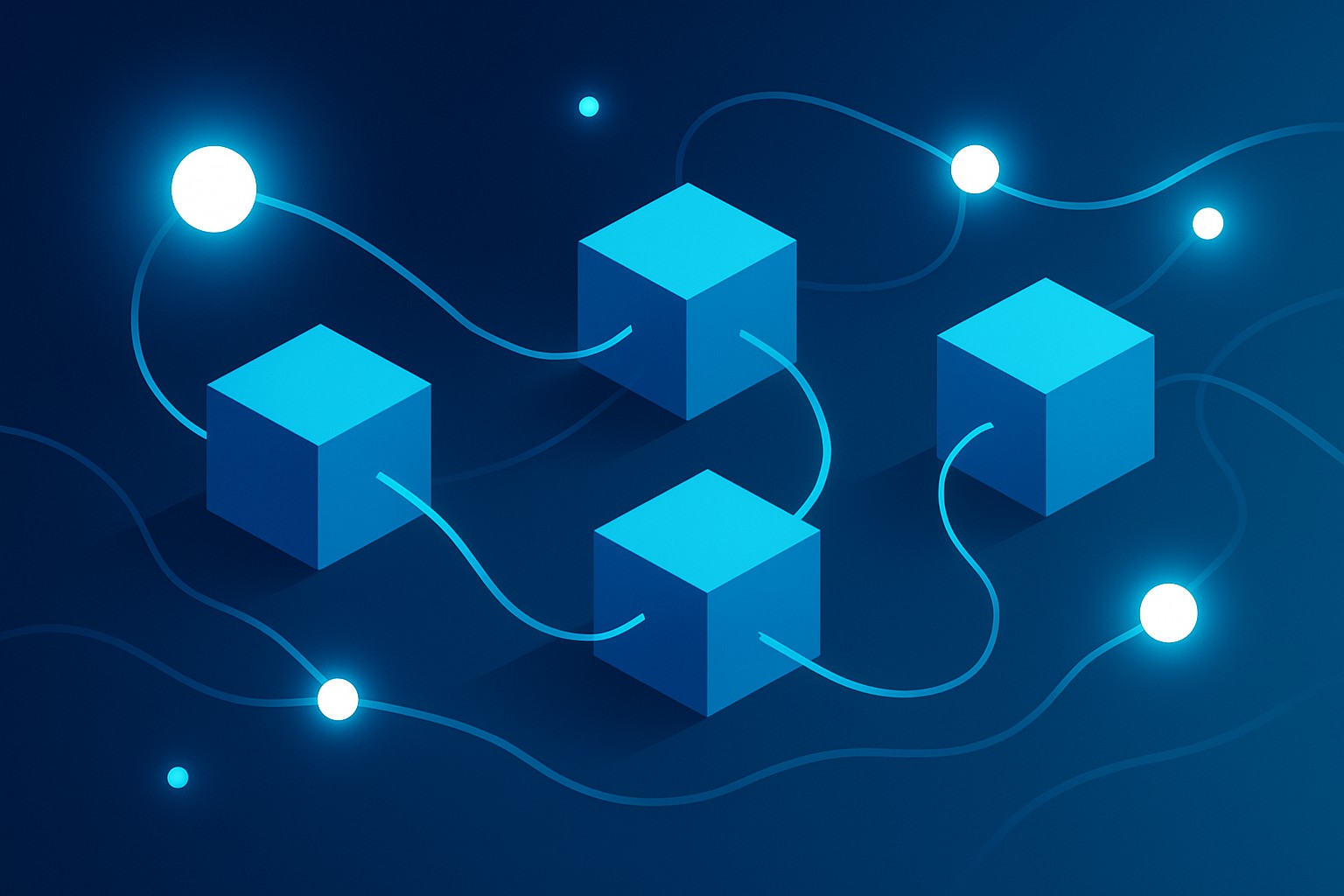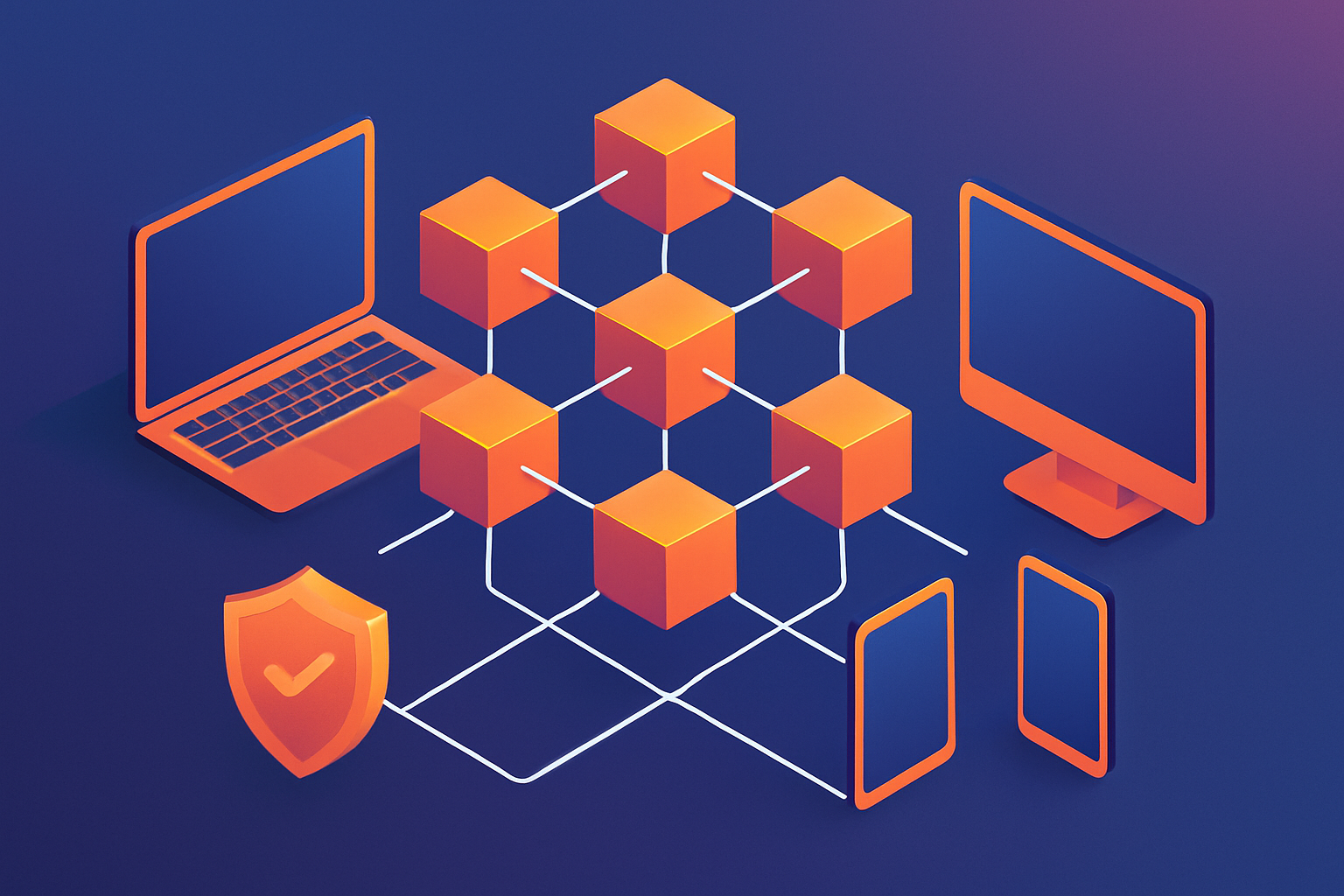Watermelon Margarita - Calories Compared to Other Cocktails
Discover the calorie content of a watermelon margarita and how it stacks up against popular cocktail...

Blockchain is basically a digital ledger that keeps track of information or transactions across a bunch of computers within a network. Think of it as a shared spreadsheet where every single entry is out in the open for everyone to see, yet no one can sneak back and fiddle with the past records. This kind of setup works like a charm to keep data both transparent and secure, allowing people to trust the info without having to lean on a middleman or some central authority.
The blockchain is made up of blocks that store data linked together like a digital chain. When new information comes along it sparks the creation of a fresh block. This block hooks itself to the previous one using cryptographic hashes, like locking a secret diary with a special code. This whole process runs across a network of computers known as nodes that all pitch in to verify these blocks through consensus methods.
Imagine blockchain as a public notebook that basically anyone can jot in, but here’s the kicker—once you’ve written something down, it’s there for good. No erasing, no sneaky edits. This means every single entry sticks around forever, making the whole thing completely transparent and trustworthy without having to rely on any single person or organization to keep things honest.
Each feature brings clear benefits. Decentralization ensures data isn’t held hostage by a single entity and helps build trust. Transparency lets anyone view transactions, boosting honesty. Immutability locks records in place and makes fraud hard to commit. Cryptographic security protects sensitive information like a watchful guardian. Anonymity balances privacy and trust. Smart contracts automate tasks in finance and supply chains, reducing human errors and speeding processes.
| Type | Control | Accessibility | Use Cases | Examples |
|---|---|---|---|---|
| Public | Open to just about anyone | Fully out in the open | Cryptocurrencies, voting systems | Bitcoin, Ethereum |
| Private | Run by a single organization | Access tightly controlled | Internal business operations | Hyperledger Fabric |
| Consortium | Governed by a group of entities | Access granted by invite | Banking networks, supply chains | R3 Corda |
| Hybrid | Control shared between parties | Access somewhat restricted | Government services, healthcare | XinFin Network |
Getting a grip on the different types of blockchains helps to clear up what they’re all about. Public blockchains are wide open and transparent but sometimes run slow because of the crowd involved. Private blockchains tend to zip along faster since one organization calls the shots. This makes them a neat fit for internal operations. Consortium blockchains spread the reins across trusted partners and strike a balance between decentralization and limited access. Hybrid blockchains blend features from both public and private worlds. They offer a flexible approach often used in sensitive fields like healthcare or government.
Blockchain’s influence stretches far beyond Bitcoin and weaves into many corners of our daily lives. Take global supply chains for example. They often rely on it to trace products from origin to consumer and help stop counterfeit goods. Digital identity systems give people more control over who sees their personal data in a secure way. Voting platforms built on blockchain add trust by creating clear tamper-proof records that help keep election integrity intact. In healthcare, it enables safe sharing of medical records between providers and improves both care quality and privacy.
These myths often scare off newcomers before they even get their feet wet. While blockchain got its start with Bitcoin, it’s since spread its wings and now touches a bunch of industries you might not expect. Transactions on public blockchains are pseudonymous but still leave a trail, so they’re far from being totally anonymous. The security angle? It really boils down to how well things are set up—no silver bullet there. Blockchain isn’t always the fastest or cheapest option, especially when it hits those pesky scaling roadblocks.
Alright, diving into blockchain might sound like jumping into the deep end, but stick with me—it’s really not as scary as it seems. Think of it as unlocking a new level of understanding in the digital world, one block at a time.
Dive into the world of blockchain by choosing a reliable digital wallet to keep your assets or tokens safe. Using blockchain explorers lets you peek at live transactions and blocks and gives you a real sense of how data zips around behind the scenes. It’s a good idea to get a grip on basic security habits like handling your private keys like precious secrets and steering clear of sketchy scams. Starting off with small, low-risk transactions or playing around on educational platforms can boost your confidence without the stress. Sites like aokings.com offer beginner-friendly guides and handy tools that make the whole blockchain journey less intimidating and more rewarding.

Visual representation of blockchain technology showing linked blocks and decentralized nodes
Blockchain technology keeps pushing the envelope by riding waves like layer-two scaling solutions that crank up speed and shave off costs. Cross-chain interoperability acts like a digital handshake improving network connectivity. Regulatory clarity is slowly growing around the globe, aiming to balance fostering innovation and ensuring security. New applications in decentralized finance (DeFi), non-fungible tokens (NFTs) and supply chain digitalization paint a picture of a future where blockchain isn’t just tech jargon but a visible part of everyday life.
26 posts written
Beatrice bridges the gap between human behavior and sustainability through compelling narratives that inspire action.
Read Articles
Discover the calorie content of a watermelon margarita and how it stacks up against popular cocktail...

Planning a wedding for 50 guests doesn’t have to break the bank. Explore average costs and smart bud...

Wondering if Belize City is worth visiting? Explore its rich history, vibrant culture, stunning natu...

Explore the top travel adventure books that ignite the passion to wander, offering stories filled wi...
